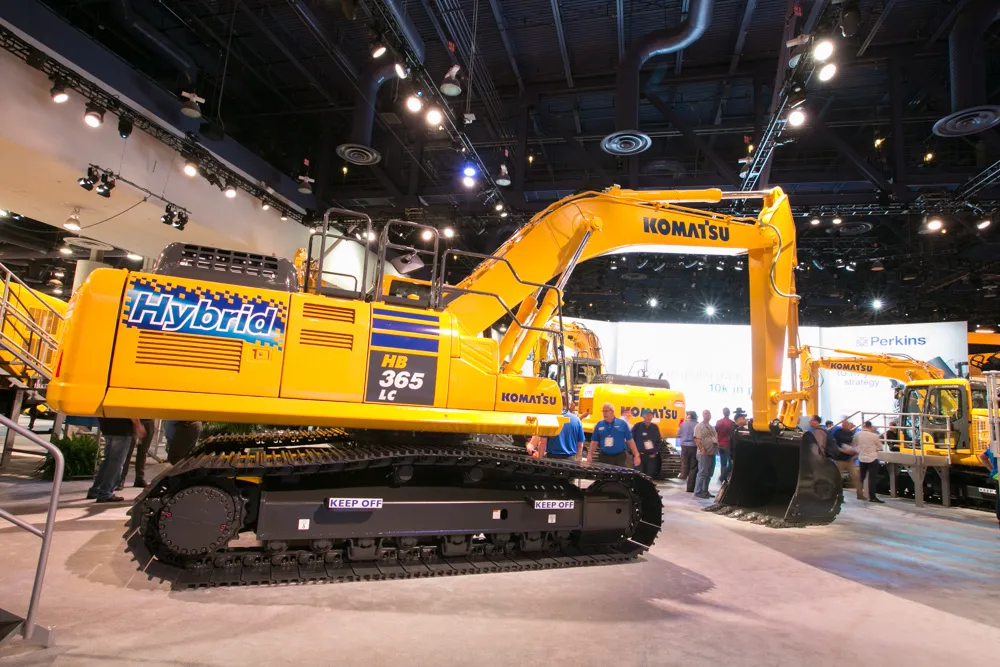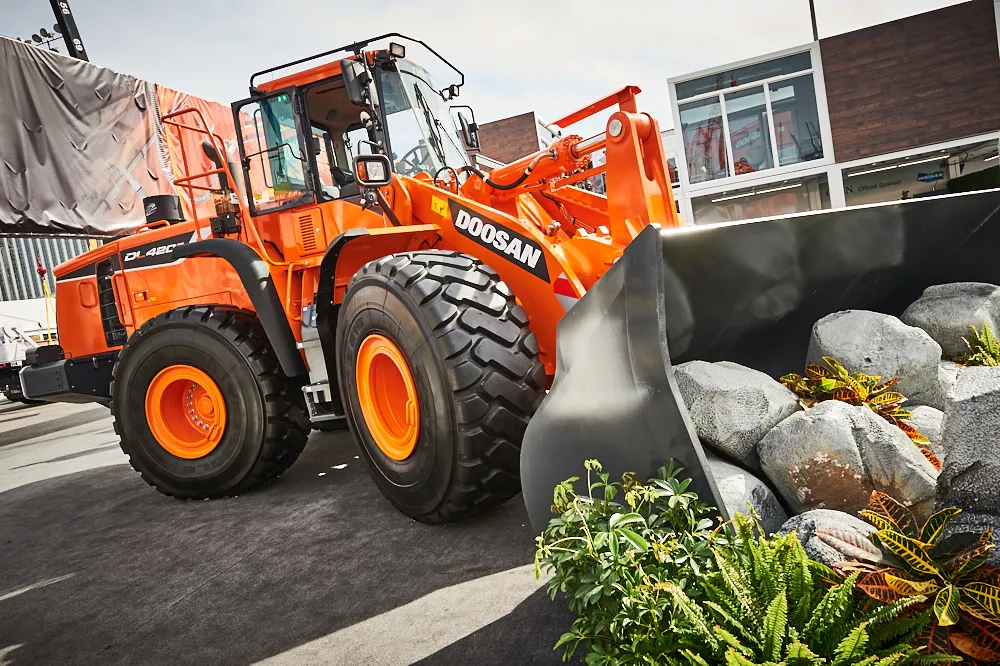Both machines are powered by Doosan’s DL06K ‘common rail’ six-cylinder turbocharged diesel engine, said to meet Stage IIIB engine emission regulations through the use of EGR (Exhaust Gas Recirculation) and Diesel Particulate Filter (DPF) after-treatment technologies. The engine has a displacement of 5,890cm³ and is said to deliver 15% more power [82 kW @ 1850RPM] than previous Stage IIIA models. The engine also delivers 11% more torque (49.5kgf.m) in the DX160LC-3 model. Doosan said that factory tests had
June 24, 2013
Read time: 3 mins
Both machines are powered by 695 Doosan’s DL06K ‘common rail’ six-cylinder turbocharged diesel engine, said to meet Stage IIIB engine emission regulations through the use of EGR (Exhaust Gas Recirculation) and Diesel Particulate Filter (DPF) after-treatment technologies.
The engine has a displacement of 5,890cm³ and is said to deliver 15% more power [82 kW @ 1850RPM] than previous Stage IIIA models. The engine also delivers 11% more torque (49.5kgf.m) in the DX160LC-3 model. Doosan said that factory tests had shown a reduction of up to 17.5% in fuel consumption, depending on the operating mode selected and the work being undertaken.
Contributing to the overall reduction in fuel consumption is the improved cooling efficiency and the installation of a new fan clutch with electrically controlled fan speed. The latter is dictated by the coolant, hydraulic oil and cooled charged air temperatures and target engine speeds; and the electrically controlled fan speed results in much lower fan noise and better fuel efficiency.
In addition, a new ECO Gauge on the control panel also helps the operator to lower fuel consumption by providing real time monitoring of fuel rate and actual engine-per cent load. Two new operating modes (P+ mode: Power Plus and L: Lifting) also improve controllability and efficiency with additional sensors which further allow owners/operators to optimise management of pump/engine/main control valve according to their needs.
To increase performance in rough terrain conditions, the drawbar pull has been increased by 5% in the DX140LC-3 model and by 34% in the DX160LC-3 excavator, while swing speed and torque have been increased by up to 12% on both models.
The new Roll Over Protection Structure (ROPS) and OPG certified cab offers more space (+6%) for the operator and several convenient features, such as direct control through the joysticks, which have new proportional thumb wheel switches and integrated buttons to provide precise, proportional control of attachments.
The DX140LC-3 and DX160LC-3 crawler excavators are said to have a more robust undercarriage with reinforced components, including track links, track springs and sprockets. The boom and arm have been strengthened by increasing the metal thickness at critical points and by using reinforced bushings.
The engine bonnet is split into several parts to improve serviceability, while components such as filters, valves and batteries are all within easy reach for service work.
There is an expanded choice of options for both models. These include a floating boom that is particularly useful in loading cycle and breaking work; an inside cab microphone for increased safety; and a straight travel pedal that is a must when trenching or travelling a long distance.
The DX140LC-3 excavator is available as standard with a 2.5m width undercariage and can be combined with monobloc or optional articulated front working equipment and different sizes of dozer blade and arm options.
The DX160LC-3 model can be supplied with either standard (2.8m width) or narrow tracks (2.5m width); monobloc or articulated front working equipment; different sizes of dozer blades and arms and a high track undercarriage offering a higher ground clearance for work in, for example, recycling and demolition.
The engine has a displacement of 5,890cm³ and is said to deliver 15% more power [82 kW @ 1850RPM] than previous Stage IIIA models. The engine also delivers 11% more torque (49.5kgf.m) in the DX160LC-3 model. Doosan said that factory tests had shown a reduction of up to 17.5% in fuel consumption, depending on the operating mode selected and the work being undertaken.
Contributing to the overall reduction in fuel consumption is the improved cooling efficiency and the installation of a new fan clutch with electrically controlled fan speed. The latter is dictated by the coolant, hydraulic oil and cooled charged air temperatures and target engine speeds; and the electrically controlled fan speed results in much lower fan noise and better fuel efficiency.
In addition, a new ECO Gauge on the control panel also helps the operator to lower fuel consumption by providing real time monitoring of fuel rate and actual engine-per cent load. Two new operating modes (P+ mode: Power Plus and L: Lifting) also improve controllability and efficiency with additional sensors which further allow owners/operators to optimise management of pump/engine/main control valve according to their needs.
To increase performance in rough terrain conditions, the drawbar pull has been increased by 5% in the DX140LC-3 model and by 34% in the DX160LC-3 excavator, while swing speed and torque have been increased by up to 12% on both models.
The new Roll Over Protection Structure (ROPS) and OPG certified cab offers more space (+6%) for the operator and several convenient features, such as direct control through the joysticks, which have new proportional thumb wheel switches and integrated buttons to provide precise, proportional control of attachments.
The DX140LC-3 and DX160LC-3 crawler excavators are said to have a more robust undercarriage with reinforced components, including track links, track springs and sprockets. The boom and arm have been strengthened by increasing the metal thickness at critical points and by using reinforced bushings.
The engine bonnet is split into several parts to improve serviceability, while components such as filters, valves and batteries are all within easy reach for service work.
There is an expanded choice of options for both models. These include a floating boom that is particularly useful in loading cycle and breaking work; an inside cab microphone for increased safety; and a straight travel pedal that is a must when trenching or travelling a long distance.
The DX140LC-3 excavator is available as standard with a 2.5m width undercariage and can be combined with monobloc or optional articulated front working equipment and different sizes of dozer blade and arm options.
The DX160LC-3 model can be supplied with either standard (2.8m width) or narrow tracks (2.5m width); monobloc or articulated front working equipment; different sizes of dozer blades and arms and a high track undercarriage offering a higher ground clearance for work in, for example, recycling and demolition.







